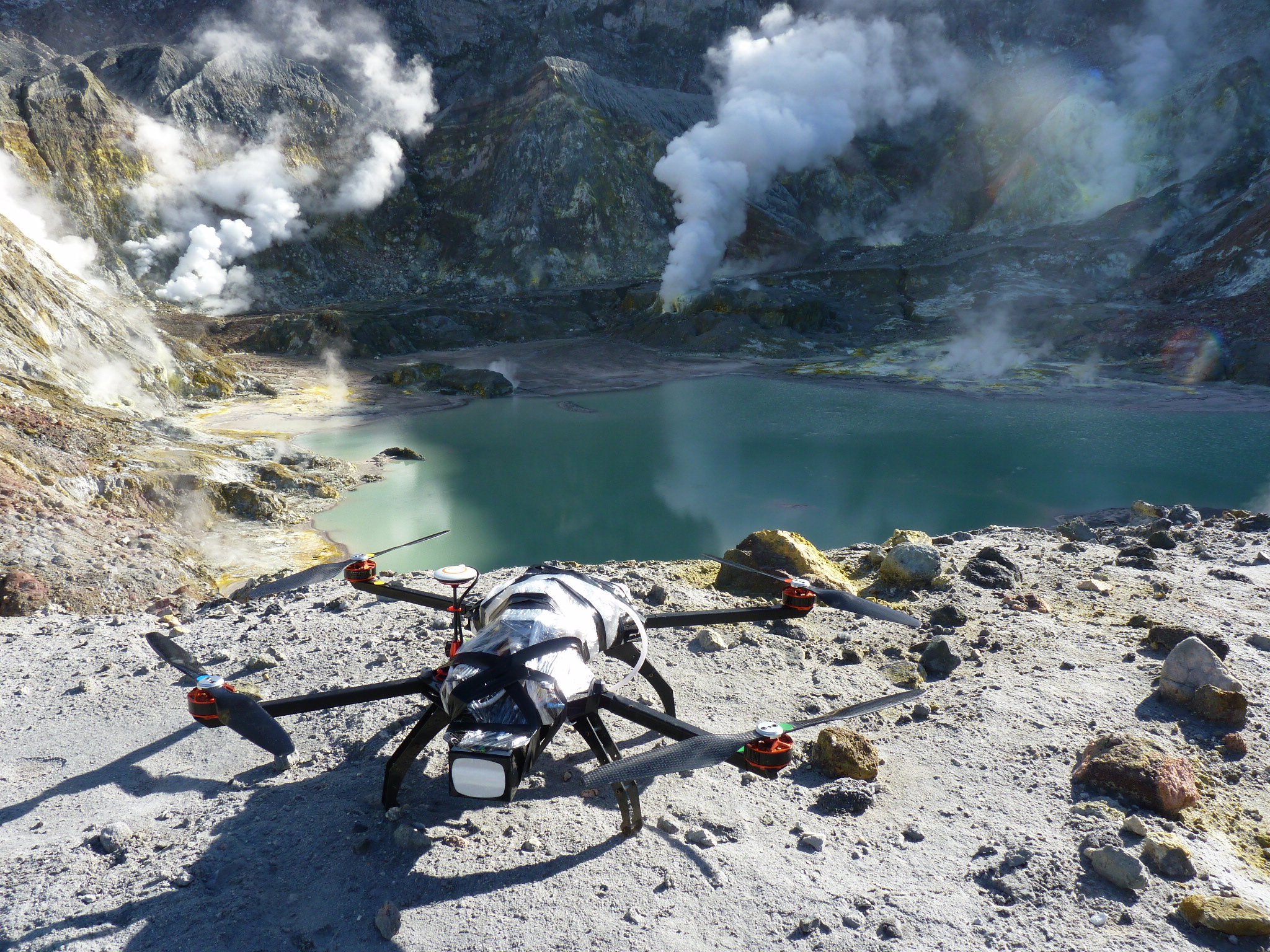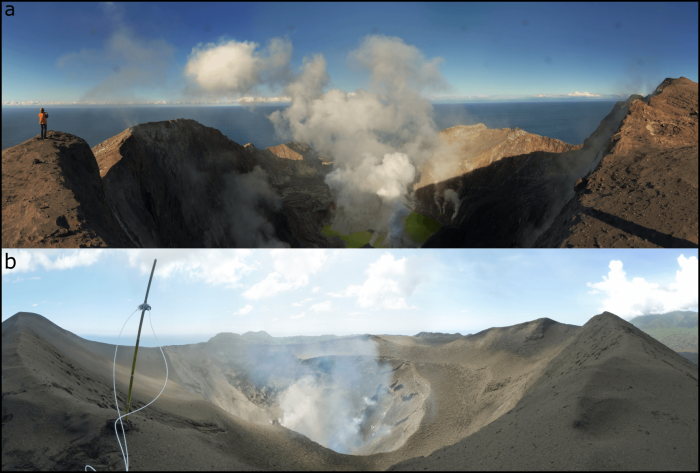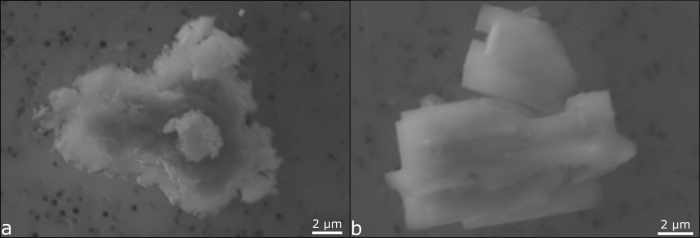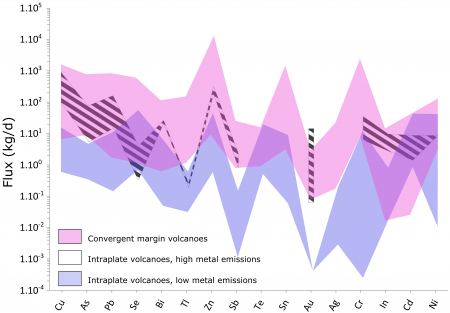
Sulfur dioxide (SO2) and halogens (HCl, HF, HBr) are the most abundant acidic species in volcanic plumes, affecting public health and forming acid rain downwind quiescent volcanoes which can kill vegetation and crops like at Masaya volcano in Nicaragua (Delmelle et al., 2002, UNRESP video). These acidic gases are emitted during eruptions, but also at quiescently active volcanoes, where gases are constantly emitted forming what are called volcanic plumes, without erupting.
Emissions of these species are quite well-known and studied, mostly owing to their large amount. Less obvious and understudied are emissions of metals from volcanoes as aerosol (i.e. solid particles). Although we do not think of species like copper or lead as volatile (gas), they are efficiently transported in volcanic gases through the formation of gaseous complexes (molecules) with more volatile species such as SO2 or HCl. As an example, Etna, which is one of the largest SO2 emitters in the world with ~2000 tons emitted every day in recent years, also discharges ~650 kg of copper and ~80 kg of lead daily (Calabrese et al., 2011).
The focus of this study was to better constrain the amount of metals released at two volcanoes, the constantly erupting Yasur volcano in Vanuatu, and the quiescently active White Island in New Zealand. Moreover, we also wanted to constrain which is/are the species forming gaseous complexes with metals that are responsible for their transport in volcanic plumes. Another important part of this study was to develop a technique to sample volcanic plumes remotely with the help of a drone. In fact, many volcanoes are understudied due to difficult access and/or risk associated with going close enough for direct sampling. While SO2 emissions can be quantified from a distance (via satellite, for example), low concentrated metals require direct sampling.
Metal emissions were investigated at two volcanoes, both located in subduction zones but with different types of activity. White Island is an andesitic volcano, about 50 km offshore from New Zealand’s North Island (Figure 1a). It has been in a state of unrest (i.e. quiescent activity) since the last eruption in 2012-2013, with a volcanic plume emitting ~300 tons of SO2 per day (Christenson et al., 2017). Yasur is a basaltic trachyandesite scoria cone on Tanna Island, in the southern Vanuatu archipelago, Pacific Ocean (Figure 1b). The strombolian activity has occurred for the past several hundred years with eruptions every 2-30 minutes, with quiescent degassing in between eruptions. Only few SO2 emission studies have been performed, showing discharge of 600-900 tons per day (Bani and Lardy, 2007; Métrich et al., 2011).
During this study, we simultaneously collected acidic species (SO2, HCl, HF) and aerosol (solid particles). For this, we used a filter pack containing four filters in a series: the first one collecting particles and the last three reacting with acidic gases. The volcanic plume was pumped through the filter pack, and the total volume was measured and forced through with a flow meter (Figure 1b). We mounted this setup on a TurboAce Matrix quadcopter for sampling at White Island on one occasion, flying the drone in the volcanic plume while collecting samples. Back at the laboratory, we analyzed the filters to recover the amount of metals emitted and observed the solid particles under an electronic microscope to identify the types of particles.

Figure 1: Photos of the two studied volcanoes. a) Photo of White Island from the crater rim showing the volcanic plume and the crater lake filling part of the crater floor. b) Picture of Yasur from the crater rim with the volcanic plume from quiescent degassing in between Strombolian eruptions. Note the filter pack attached to a stick and connected to the pump by nylon tubing. (Photo credit: C. Mandon)
The type of particles we observed the most were silicates, which can be formed directly from the magma or can be bits of the conduit walls dragged within the plume. Many of them contained high sulfur content, indicating possible coating of these particles by sulfuric acid. Sulfates were also common (Figure 2b), emphasizing the importance and reactivity of sulfur in volcanic plumes. The most interesting particles were Zn-Cu oxides (Figure 2a), thought to be zinc and copper gaseous complexes being oxidized in contact with the atmosphere and forming oxides.

Figure 2: Electronic microscope pictures of solid particles. a) Zn oxide with a minor amount of Al, Cu, S, Cl, Ca from the plume of Yasur. b) Calcium sulfate from the plume of White Island. Republished with permission from JVGR.
The valuable point of filter packs is that, coupled with a measure of SO2 flux, we can estimate the metal emission rates from volcanoes. At White Island, we measured that around 6 to 10 kg of copper, arsenic, and zinc are emitted every day within the volcanic plume. These fluxes correspond to a low level of activity and are one to two orders of magnitude lower than those measured during the 1976-2000 eruptive cycle (Le Cloarec et al., 1992; Wardell et al., 2008).
The change in metal emissions with volcanic activity emphasizes the effect of temperature on metal transport: metals can only be transported efficiently as volatiles at high temperatures, and they tend to precipitate as solids in the subsurface environment with decreasing temperatures. The much higher fluxes measured at Yasur, where the magma is only meters below the surface, agree with this observation. There, as much as 175 kg of copper, 35 kg of arsenic and zinc, and 22 kg of lead are emitted daily, with direct environmental implications for local populations.
As we were interested in understanding what influences metal emissions, we compiled all the data on metal fluxes from volcanoes (Figure 3). Besides temperature, another parameter affecting the volatility of metals is the presence and amount of major volatile species. Volcanoes from convergent margins (i.e. subduction zones), where the subducting oceanic plate releases its volatiles to the magma, will thus have a very different gas load compared to intraplate volcanoes (hot spot or continental rifting volcanoes). This is reflected in the low metal emissions from Kilauea and Erta Ale, for example, which are two intraplate volcanoes.

Figure 3: Comparison of metal fluxes from all of the filter pack data reported from volcanoes around the world. Volcanoes are grouped according to their tectonic environment, and in the case of intraplate volcanoes, their level of metal emissions. Republished with permission from JVGR.
However, we noticed that some volcanoes from intraplate setting actually emit a lot of metals, whereas some from subduction environment are small contributors. The amount of volatiles (i.e. tectonic setting) as well as their composition influence metal transport. To have a better understanding of this phenomenon, we performed thermodynamic calculations to compute the speciation of metals; in other words, we calculated which are the gaseous complexes present in the plume. We found that sulfur, despite being abundant, does not form many complexes with metals in volcanic plumes. Halogens, especially chlorine and bromine, however, are very efficient at transporting metals. These results explain why Nyiragongo and Erebus, two intraplate volcanoes with high halogen emissions, emit much more metals than the subduction-related Lascar volcano, which is poor in halogens.
Another interesting result of the study was the possibility to use filter pack samples to monitor volcanic activity. In fact, we could observe changes between hydrothermal and magmatic contributions during our 2-year study at White Island. Along with the technological improvement of the sampling technique using a drone, these results are relevant for institutions monitoring active volcanoes with restricted access.
These findings are described in the article entitled Metal transport in volcanic plumes: A case study at White Island and Yasur volcanoes, recently published in the Journal of Volcanology and Geothermal Research.
References:
- Bani, P., Lardy, M., 2007. Sulphur dioxide emission rates from Yasur volcano, Vanuatu archipelago. Geophysical Research Letters, 34(20): n/a-n/a.
- Calabrese, S. et al., 2011. Atmospheric sources and sinks of volcanogenic elements in a basaltic volcano (Etna, Italy). Geochimica et Cosmochimica Acta, 75(23): 7401-7425.
- Christenson, B.W., White, S., Britten, K., Scott, B.J., 2017. Hydrological evolution and chemical structure of a hyper-acidic spring-lake system on Whakaari/White Island, NZ. Journal of Volcanology and Geothermal Research, 346: 180-211.
- Delmelle, P., Stix, J., Baxter, P., Garcia-Alvarez, J., Barquero, J., 2002. Atmospheric dispersion, environmental effects and potential health hazard associated with the low-altitude gas plume of Masaya volcano, Nicaragua. Bulletin of Volcanology, 64(6): 423-434.
- Le Cloarec, M.F., Allard, P., Ardouin, B., Giggenbach, W.F., Sheppard, D.S., 1992. Radioactive isotopes and trace elements in gaseous emissions from White Island, New Zealand. Earth and Planetary Science Letters, 108(1-3): 19-28.
- Métrich, N. et al., 2011. Magma and Volatile Supply to Post-collapse Volcanism and Block Resurgence in Siwi Caldera (Tanna Island, Vanuatu Arc). Journal of Petrology, 52(6): 1077-1105.
- Wardell, L.J., Kyle, P.R., Counce, D., 2008. Volcanic emissions of metals and halogens from White Island (New Zealand) and Erebus volcano (Antarctica) determined with chemical traps. Journal of Volcanology and Geothermal Research, 177(3): 734-742.
- UNRESP video: Experience: Living with volcanic gases, Masaya, Nicaragua, https://vumo.cloud/









